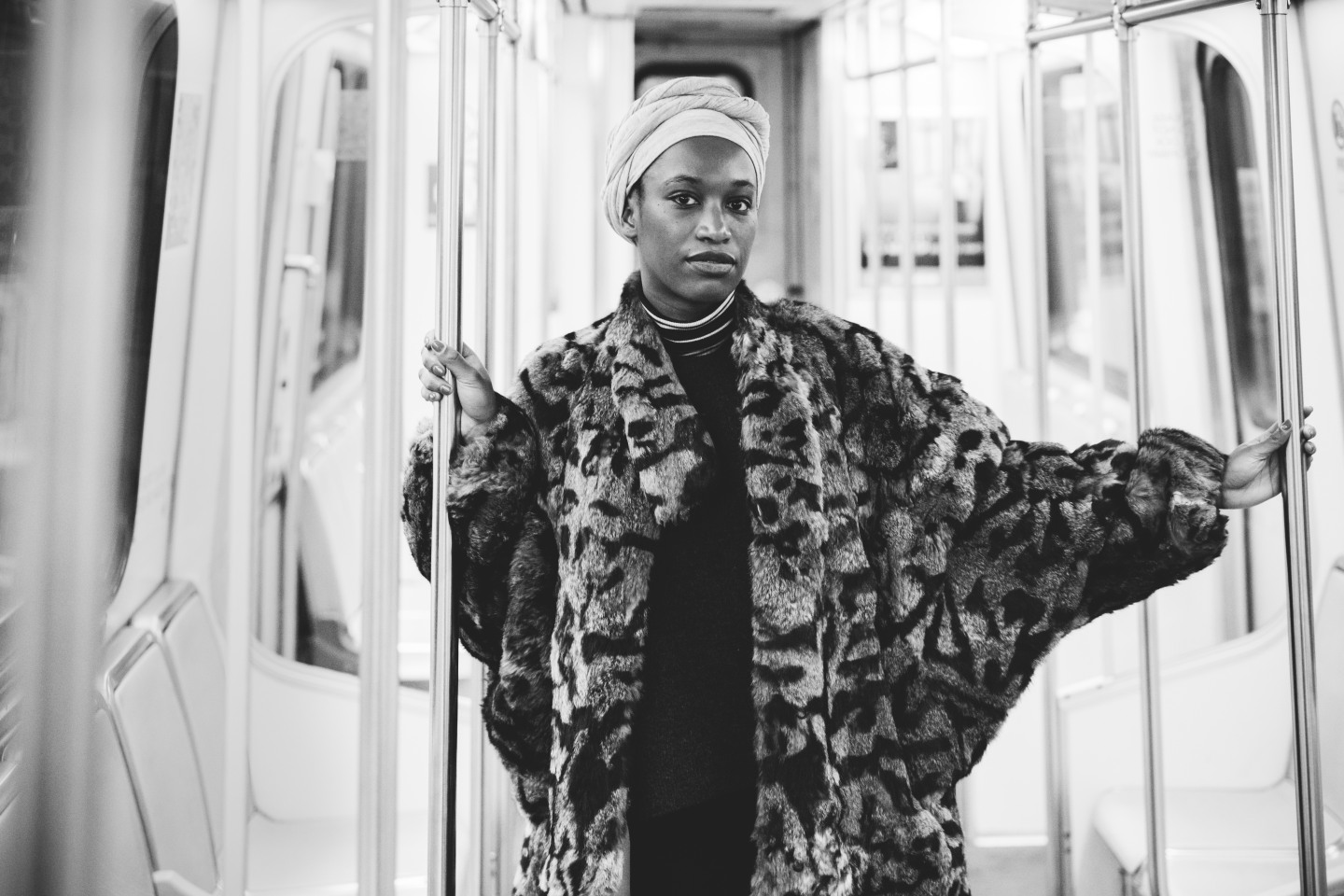 Tschabalala Self in Detroit.
Joe Gall/Red Bull
Tschabalala Self in Detroit.
Joe Gall/Red Bull
A Detroit spring is unpredictable. In mid-April, amid the five-year era that many residents of the former auto industry capital have christened a “renewal period,” the city’s weather shifts drastically in just a three-day span: from brisk steel skies to a feverish, manic heat. Tucked away in the Eastern Market — a historic northeast quadrant home to a carousel of businesses, bars, and restaurants — 26-year-old visual artist Tschabalala Self is steady at work. The Harlem native is here to unveil her most recent undertaking, two large-scale animations that, she says, allow for a more complex configuration of her subjects. It is not a totally divergent path from the work that has already brought her deserved praise in W and The New York Times, and secured her gallery exhibitions in Los Angeles, Naples, New York City, and London.
A graduate of Bard and Yale, Self’s practice — an elemental meld of fabric-based patchwork, painting, and illustration — extends the awe-inspiring acuity of master artists like Faith Ringgold, Ana Mendieta, and Wangechi Mutu in conceptually radiant modes. Her latest composition, “My Black Ass” — which is on view until May 14 at the Red Bull House of Art, where she was a creative fellow for the last three months — again turns its gaze on the black woman, and the identity in which she has both inherited and been stripped of. “I’m not trying to envision it as one singular entity, but instead to open up more possibilities for what it could be,” she said, speaking to the contours of black womanhood.
Before the Detroit unveiling, I sat with Self to discuss how the black body is policed, subversion as a form of agency, and what meaning we can find in the shadows.
In earlier works, you touched on this idea of “the potential of identity.” How does your new work— the large video animation and the cutouts — expand on the idea that there is a boundlessness to identity within blackness, or for women in general?
With each project, I try to further animate the body. The significance of it being animated and the body being able to move, is that through its movement it can gain a certain level of agency that corrupts the normal power dynamic of viewer and object. If the artwork itself has the ability to move and breathe and interact in ways that are similar to how the viewer would, it elevates the work from object into something that has its own life — and in having its own life, it has its own ambitions and it has the same infinite realm of possibilities of expression and understanding as an individual would. In the pieces coming, drifting into sculpture, the three-dimensional realm, and also in film — I’m moving and contending with time and space in a different way. Through animation, I think that it allows for the work and for my practice to give life to the [subject] in a different way that the paintings couldn’t do, because of how static they are.
You mentioned movement as a mode of agency but also as a way to reclaim power. Can you speak more to that?
What I’ve kinda always wanted to do, even where the works are static, I like to have the implied movement of them, have them mid-gesture, or have them performing or completing some kind of action. The painting space you can feel like they are moving and if they have this ambition to point A to point B, then whatever they’re doing, wherever they’re caught being, whatever’s being caught being done in those scenes, it’s not a form of action for the viewer. It’s more like you imagine the subject in a painting is living their life or experiencing a moment in their existence that you have to witness. That’s the positionality I want the viewer to take in order for them to understand the significance of their relationship to the figure. The figures, they’re not necessarily performing anything for the viewers; I want them just to be. They’re living their own lives.
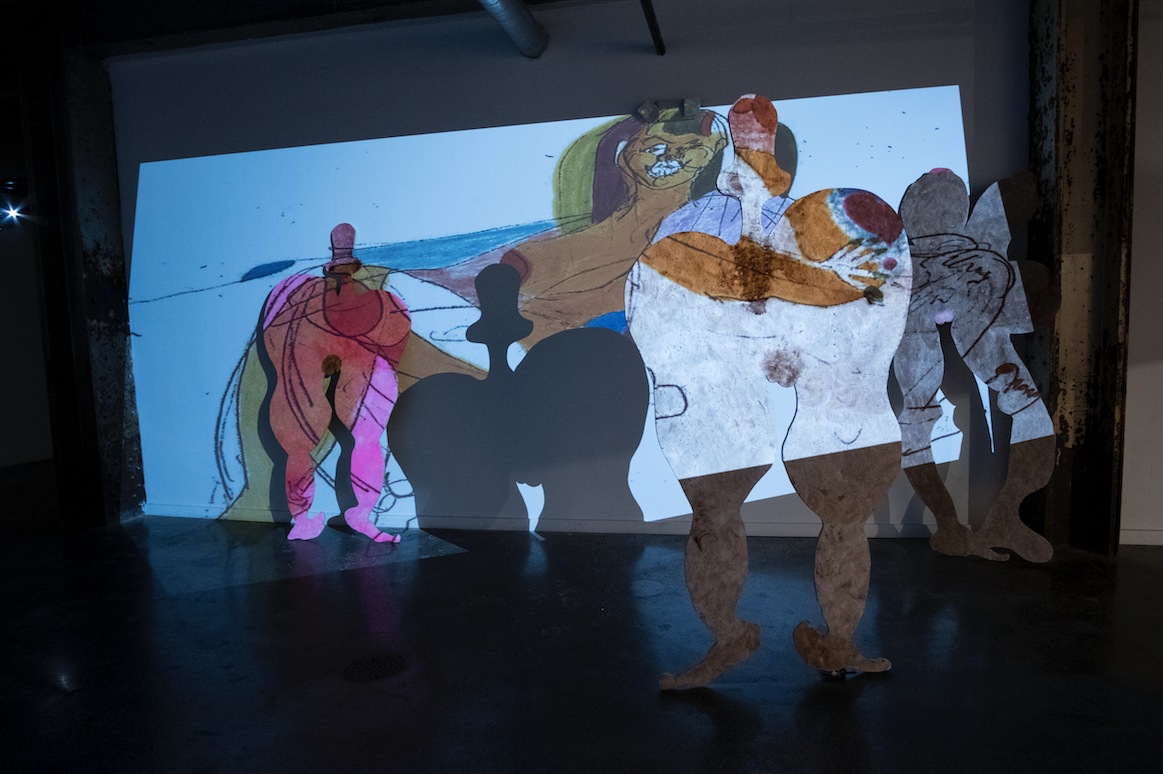 “My Black Ass” (2017).
Joe Gall/Red Bull
“My Black Ass” (2017).
Joe Gall/Red Bull
I’m glad you said that. In a previous interview you mentioned how the work is not about being black, it’s about people who just happen to be black.
That is true. But the person who quoted me saying that misquoted me a little bit. The thing is, I’m not putting the qualities of a subject in a hierarchy. Their blackness is not in competition with any of their other qualities. I don’t think them being black is less or more significant than any other categories that have existed; each informs every aspect of your understanding. The work is not about the characters being black, but all the characters in the work are black, so you can't understand anything about them without acknowledging their blackness.
Regarding the idea of blackness in the social space and the way we live today, has the political and social climate informed this new work in any way?
It has. Whatever’s going on socially affects me and implicates me and my body because of the way I work. It implicates my mental state, my emotional state. So it affects me. As an artist, I’m living under these constraints. But I don’t wanna make it seem as if every effect of your blackness is negative or restrained. Whatever circumstances you are living under as the artist is affecting you, so it has to affect your work. I don’t think that you can work within a vacuum outside of what’s happening around you socially.
Is the work inherently political for you? Is it trying to make a political statement?
I think that my life is inherently politicized. So any action I deal with in my life is a political gesture. Especially if you’re making an action you move, any action you make to liberate yourself in a social circumstance which is designed to oppress you is a political action towards your own liberation. A political action against that state. My work is fighting for a larger understanding for people like me, whether that be women, black women, people of color. I also feel like because the current political state has not fostered a healthy environment for those bodies to thrive, that means you have to reclaim space. Or with me, trying to reclaim ownership over that body — a body which has been surveilled and policed and also a body which has been disparaged publicly. In doing that, I’m automatically making a political gesture. One that is against the status quo and one that’s for my own edification.
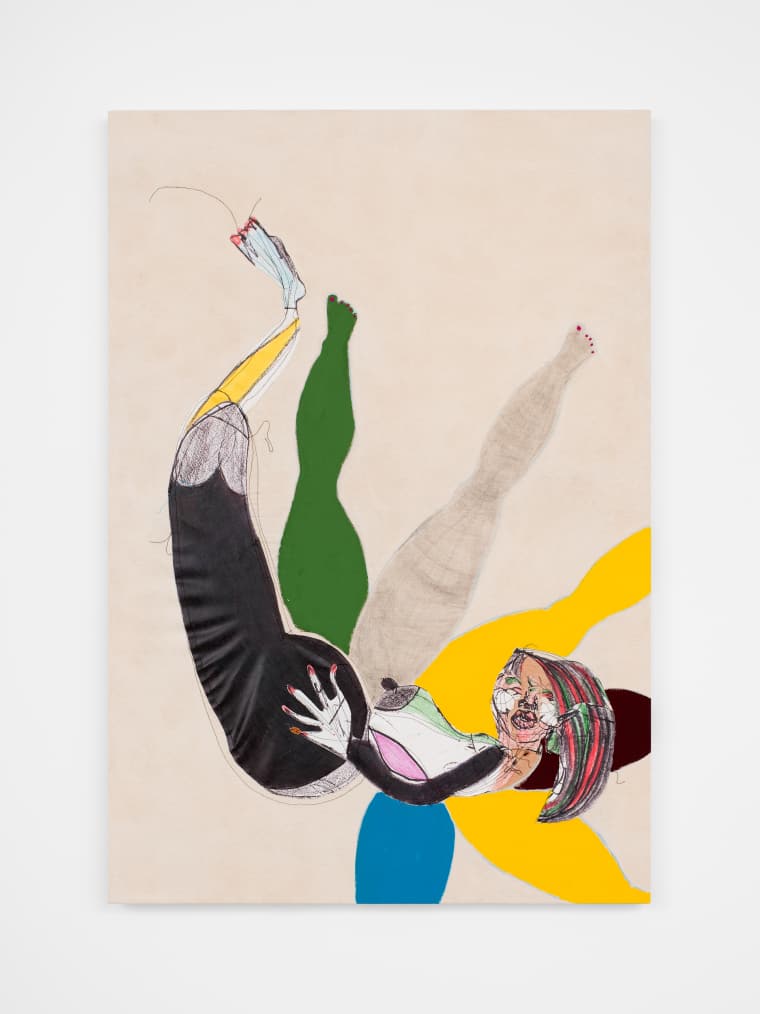 “Turnt” (2016).
Courtesy of the artist
“Turnt” (2016).
Courtesy of the artist
 “Get’it” (2016).
Courtesy of the artist
“Get’it” (2016).
Courtesy of the artist
“There are so few categories in which black people are allowed to perform and for their actions to be understood, you know?”
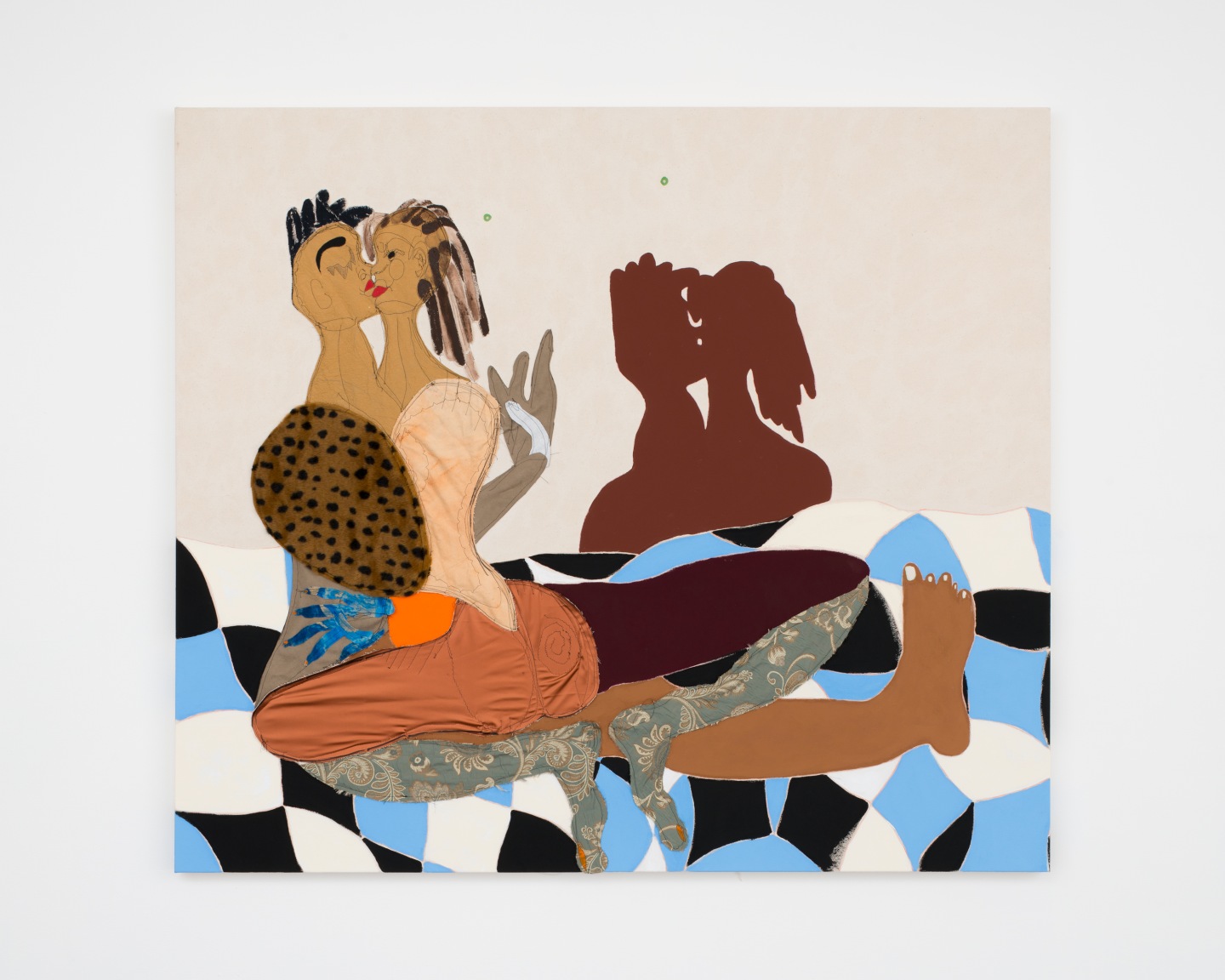 “Sunday” (2016)
Courtesy the artist
“Sunday” (2016)
Courtesy the artist
Having moved from static avatars to something that’s in constant motion, how do you see the work evolving? What is the next step in your conceptual narrative arc?
Formally the work becomes more complex, in the three-dimensional state. The sculptures at this point are still relatively flat. Moving forward, they will become more and more round, more dimensional. As they become physically more dimensional, a lot of the conceptual aspects I’m grappling with in terms of negotiating where the sculpture lie in my practice will evolve as I figure out some of the ways to actually evolve the way these things are made. That process happened to me with my paintings. As I gain a better understanding of my intention behind my painting works — the way in which I work formally became more complex. How the work is made and what it’s trying to say through how it’s made is significant.
It’s almost as if the medium is as significant as the image itself.
Exactly. And that’s why I feel I’ve explored lots of different mediums, or I've absorbed a lot of different mediums to kind of express the complexity of the ideas I’m talking about. And also, some of the immediacy and simplicity of them too. Making the work really reflects what it means to me, and what I hope it will come to mean to other people.
In the new installation, pieces of the sketches flicker off of wooden cutouts. It reminded me of the ways in which we often place feelings — of pain, of insecurity, of grief — on other people, and what we take in return.
The subject from “My Black Ass” — that’s the name of the animation — is supposed to be a character who is defiant and who moves her body to whatever liking she wants, without caring how it might offend or excite whoever’s watching. That’s what it is to be a truly liberated female figure. And also maybe past the point of liberation to the point of where she’s potentially trying to agitate and to prove her power about the freedom of how she can move or access her body in a space. The idea that you’re looking at the body, and the work is being projected back onto the body almost kind of mimics how that happens in real life. There’s an understanding of you which is projected on to you. And like you were saying, you kind of hold on to the parts that fall on the way side.
Is it a satire in that way?
It’s like—
Is she laughing at us?
I don’t think that she is laughing at you, but she would laugh at maybe a reaction or something. It’s hard to say. It’s not quite a satire, but it’s definitely a portrait of a woman who no longer cares about the opinion of the warrior. A lot of my characters are self-aware of the fact that they’re being watched. When you’re so aware that you’re being looked at or being surveilled, or that you are someone that is being consumed visually, at that point you can either cower under the weight of that pressure, or you can use that spotlight to assert your own dominance. You know? Through acknowledging the system you’re being implicated in. It’s kind of like getting in front of a problem.
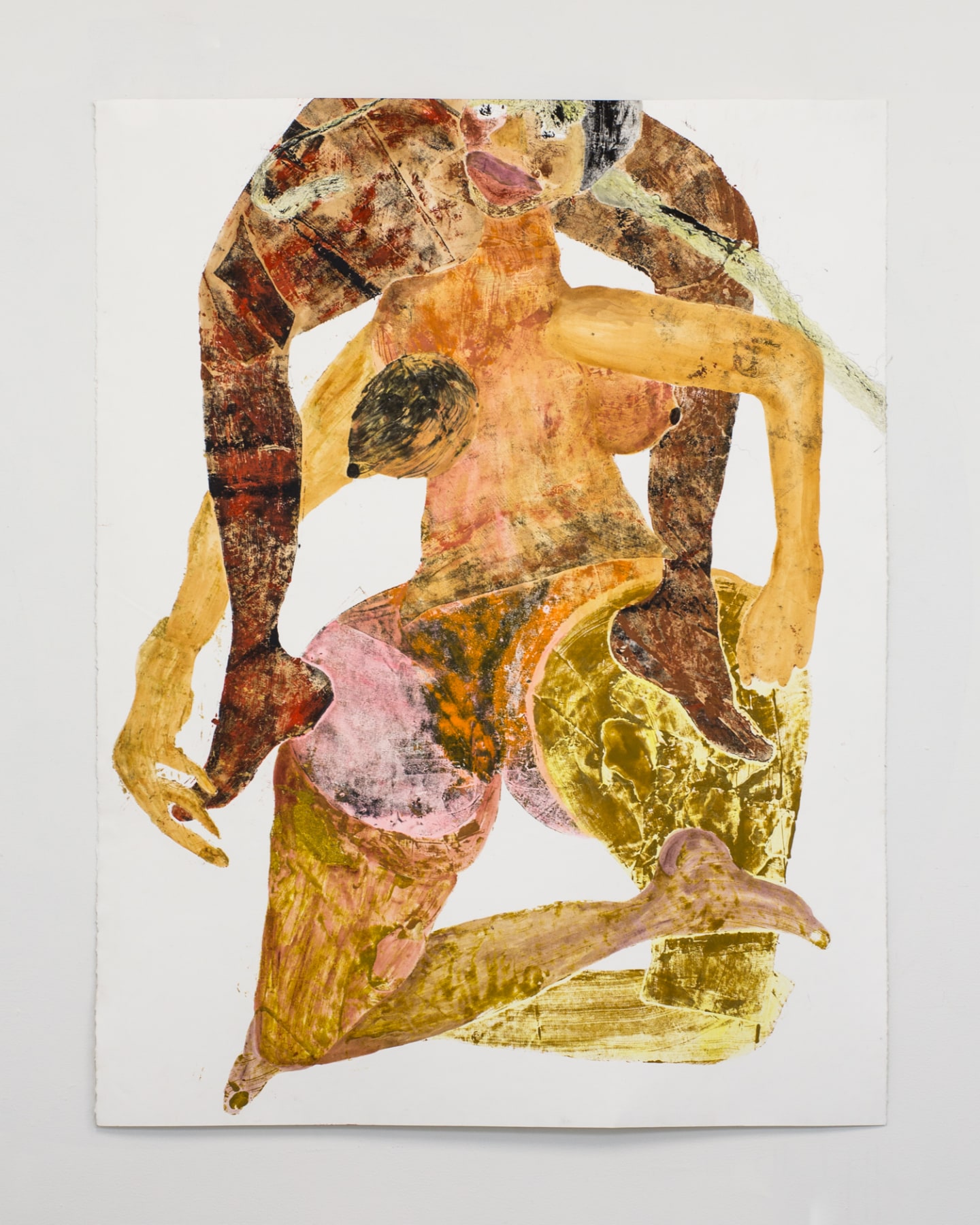 “Entwined” (2014)
“Entwined” (2014)
Are you in that state in your personal life at this point? Is the animation a reflection of how you feel: being a black woman who is constantly surveilled who has reclaimed ownership over herself.
I felt that way at times. I feel like most black people, especially in white environments, have felt that. It’s just become something that is so ubiquitous that at a certain point you might not even be aware of some of the coping mechanisms you developed to deal with that. Being hypervisible in that way. I feel like this is one way, and I’ve seen myself and others cope with that kind of dynamic. I believe there is a power in acknowledging your hypervisibility and trying to subvert it by performing in ways that are not expected and, at times, not respected. It’s a way to corrupt whatever system you are being targeted by. If you’re being made to feel uncomfortable in a space, maybe flip that burden of respectability politics, that burden of conspicuousness to whoever is imposing that onto you. Somehow flip that on to whoever’s imposing that power onto you as a way for you to reclaim it. It’s a coping mechanism to reclaim some of your power.
A coping mechanism? Or survival? Or defense? Or all these things?
I guess a coping mechanism in the sense that it would be a way to help you survive, a way to defend yourself. Even a way to maybe gain some kind of emotional, psychological traction. But I also don’t want to imply that all the figures are existing to somehow discuss blackness within implied white spaces. My ideal audience for the work are people whose bodies are implicated in the work, whether in the world or in the gallery space. A lot of the time, my ideal audience does not have access to the work at large unless it’s something they can see online.
I’m glad you brought that up. A friend and former colleague always talks about de-centering whiteness from the conversation. That is, what does blackness look like when it’s not in response to whiteness.
The work has both those lives. You have a life that you imagine yourself within, you have a life in which you understand how you see yourself, and then half of your own 'cause you can’t escape it. Hopefully, realistically, you have an understanding for your own preservation. You have an image of yourself that you imagine other people perceive you as. I think that something people that are marginalized have, that sense of double consciousness. You have to it because otherwise if you didn’t, you’d be putting yourself in precarious situations. The work has this potential possibility around it, which claims us within a vacuum of blackness but then obviously, when the work is discussed in a larger context, its positionality to whiteness has to be acknowledged. In that sense, the intention of the work changes.
But I also played a lot with shadows in this work. I've been playing a lot with shadows in the paintings. I’m still trying to figure out what exactly the shadow means to me.
I didn’t even catch that.
I’ve been trying to intentionally play with some of the shadow work. This idea that there are multiple reflections of yourself in one instance, in one space. Shadows are so interesting because the shadow’s opaque. The shadow’s a simplification. Also, the fact that the shadow is there, yet ephemeral? Something about the shadow just kind of speaks to a higher self, a self that’s outside of your physical body. But it’s still framed by physical existence.
“I believe there is a power in acknowledging your hypervisibility and trying to subvert it by performing in ways that are not expected and, at times, not respected. It’s a way to corrupt whatever system you are being targeted by.”
It’s still who you are. Yes!
I’m still trying to source and get through all this work, but the process — my practice for me is very cathartic, and it helps — is me working through a lot of my own ideas within my work. I don’t always have a clear idea of what the work specifically means, but the intentionality of the project is always the same. The goal is to allow for there to be better understanding: more diversity and understanding for the black body. New ways of understanding.
The new piece is titled “My Black Ass.” Why the ass?
I take a lot of my titling from black colloquialisms. I’ve always loved the phrase, “You can kiss my black ass!”
To that point, I feel like we always return to the woman’s body in particular — and if it’s a black woman, her ass.
That’s true, but also I feel like that’s just a colloquialism of Black American vernacular: to be like, “You can kiss my black ass!” It’s a term I've heard used since forever. A term used by people who are being defiant, or people who are daring people to confront them. And because that one particular character from the animation is a confrontational figure, not confrontational in the sense that she’s fighting, but in the sense that she’s willing to assert herself and deal with whatever comes as the result of that. I felt it was an appropriate title. And also, kind of because there is such a fixation on that body part, I thought it would be interesting to have a work that was so directly about a woman’s ass, but also for it to be known that it was her ass. No one else’s ass. Her ass wasn’t a subject for some kind of larger socio-political analysis. It’s a part of her.
Is this one woman or is she different women?
It’s one figure in different phases. In each phase she is herself but it’s something else. The actual work is comprised of 14 individual drawings, which are layered. So it’s actually just 14 drawings with the same subject — moving her body in different ways from scene to scene. The idea is that she's arranging her body, opening and closing her body out towards the viewer. I could have named the piece “Black Ass” but it was important to me for it to be “My Black Ass.”
For her to show the ownership over her body?
Yeah. And also, I think that it subliminally evokes the term, “You can kiss my black ass,” which is such a defiant term. Think about the context in which you’ve heard that. You’re always like, “Hell yeah!” ‘Cause you’re a black ass too! [Laughs] I like the idea of black people behaving badly. There are so few categories in which black people are allowed to perform and for their actions to be understood, you know?
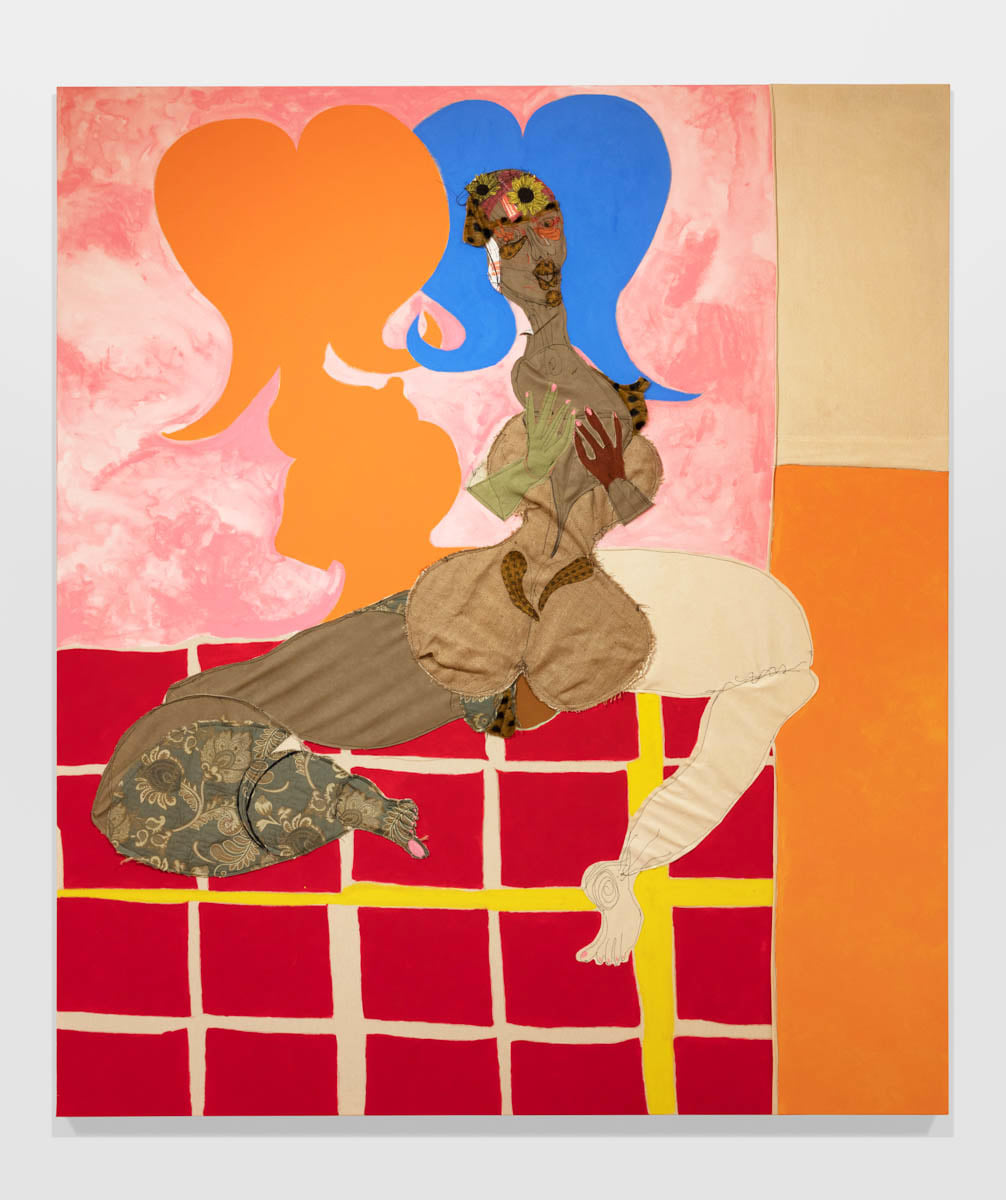 “Loner” (2016).
Courtesy the artist
“Loner” (2016).
Courtesy the artist
It depends on the space.
Yes. And the larger conversation you have, I feel like the more narrow the conversation. This idea of mimetics, where there’s only a certain number of ways people are used to talking about your identity. So if you’re not talking about your identity within those contexts, they kind of shut down. A lot of times people are forced to only speak about themselves in a way that’s already socially understood. Like you were saying earlier, it’s very hard to have a conversation around the black body outside of trauma, and a lot of times it’s hard to have a conversation about the black body that goes outside of its opposition or relation to whiteness because those are the main ways in which the conversation has generally been guiding us. If you’re trying to have a conversation outside of that, there’s no language for that. There’s no conceptual framework for that. Also, if your work is not in line with the respectability politics of promoting a positive image of blackness — which a lot of the time is a euphemism for an image of blackness which would be suitable to display in mixed company — or your work is not about a didactic conversation which frames the black body through a lens of oppression, which automatically makes it inseparable from a story of us in relation to whiteness, then there are also very few conceptual ways to understand that work.
With my work, I want to show a full range of black identities. Some of my characters are people who, if they were real, maybe wouldn’t be likeable people, or people you would describe as good. But that’s important because all black subjects can’t be these perfect bodies or these perfect characters because there are no perfect people, you know? You can't fully acknowledge someone's humanity unless you acknowledge every aspect of their humanity. I flirt with the idea of some of the characters doing nasty things, or being obnoxious people, and I feel like that should be a possibility for them — that should be something that’s open to them. Especially if there's a female character that’s behaving badly in some way. That helps them tap into a power that’s not usually afforded to them.
I was recently talking to a friend about the ways in which we ascribe the terms “black death” and “black joy,” and how we don’t generally talk about the area in the middle. Your work is speaking to that in a way — the plurality of blackness the larger world refuses to tap into.
I’m just trying to create more complex characters. I also want it to be acknowledged that with some of the characters in my work, there are a lot of affects within the black community that have resulted from black people being oppressed, being subjected to white supremacy and to violence. But what has often resulted from those situations morphed into beautiful and unique aspects of black identity, or black American identity, or black American culture. The characters have absorbed and internalized racism. Everyone has absorbed and internalized racism. But that doesn’t take away from who they really are.